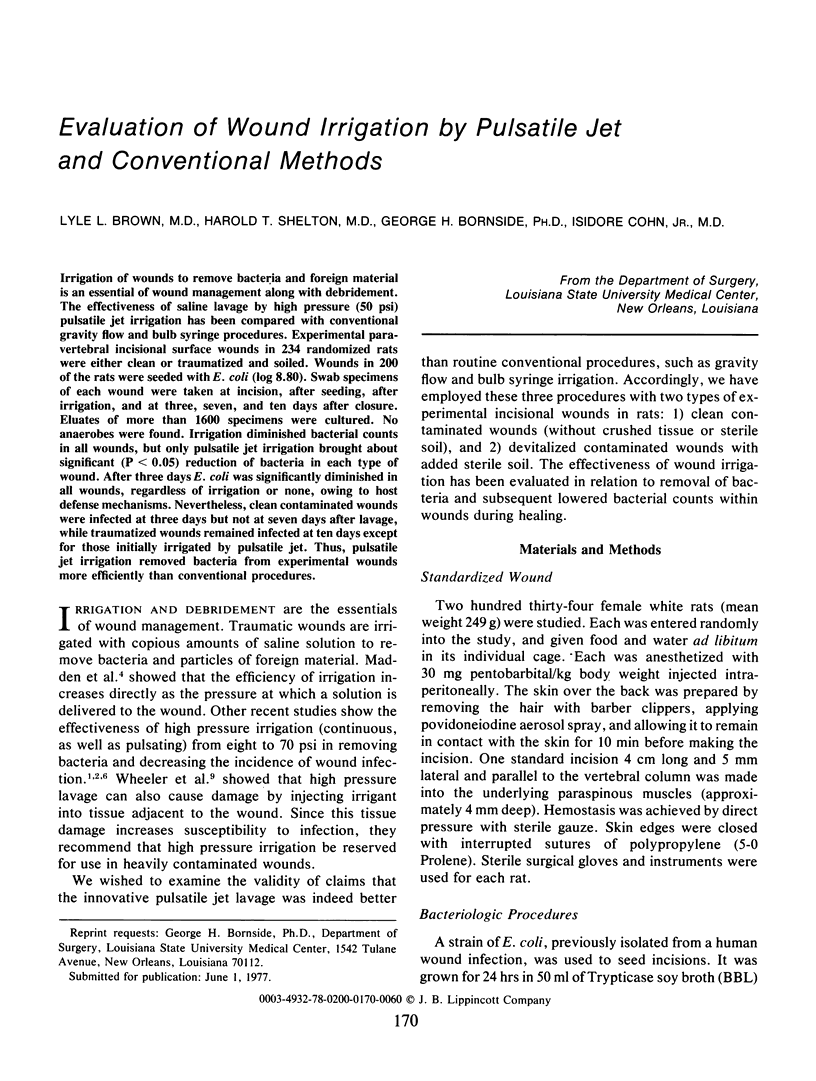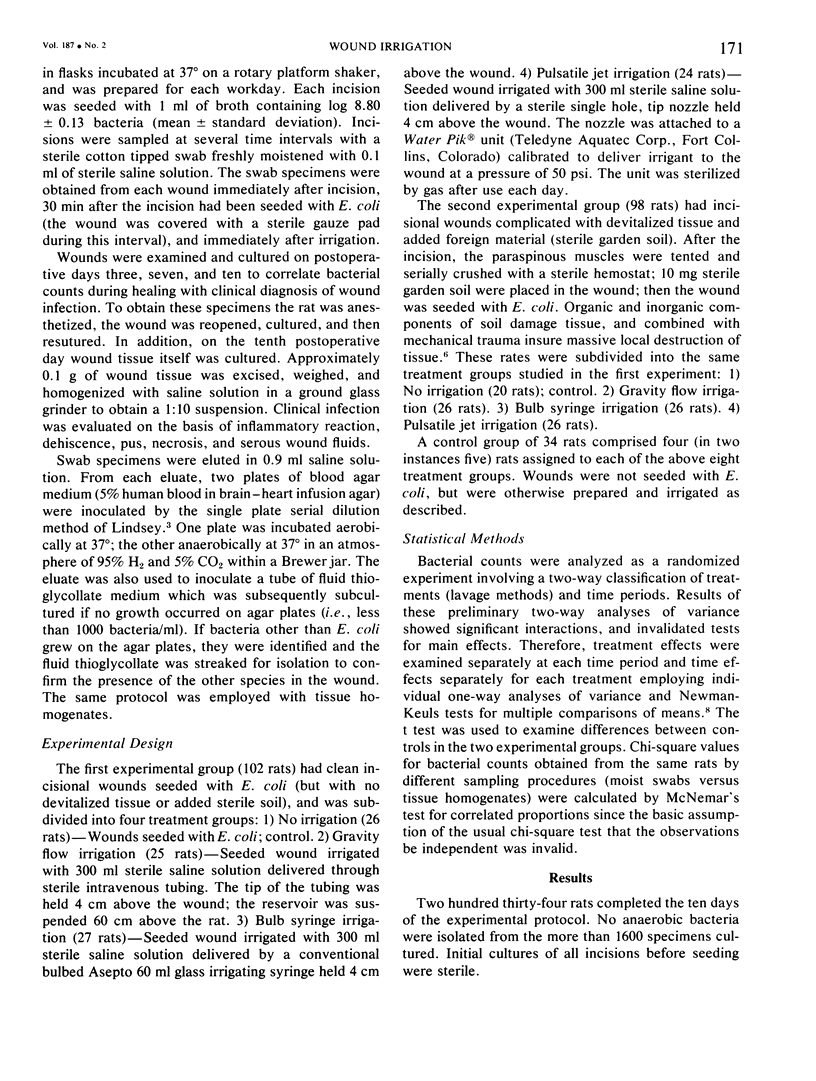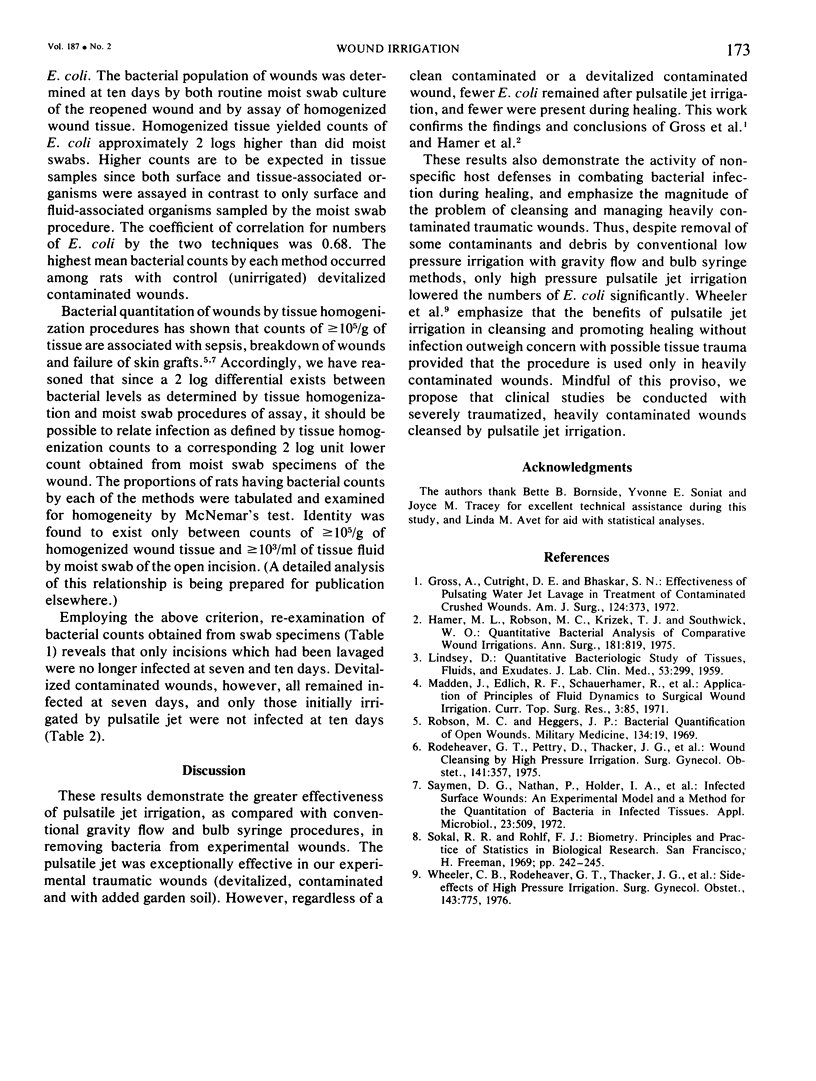Abstract
Irrigation of wounds to remove bacteria and foreign material is an essential of wound management along with debridement. The effectiveness of saline lavage by high pressure (50 psi) pulsatile jet irrigation has been compared with conventional gravity flow and bulb syringe procedures. Experimental paravertebral incisional surface wounds in 234 randomized rats were either clean or traumatized and soiled. Wounds in 200 of the rats were seeded with E. coli (log 8.80). Swab specimens of each wound were taken at incision, after seeding, after irrigation, and at three, seven, and ten days after closure. Eulates of more than 1600 specimens were cultured. No anaerobes were found. Irrigation diminished bacterial counts in all wounds, but only pulsatile jet irrigation brought about significant (P less than 0.05) reduction of bacteria in each type of wound. After three days E. coli was significantly diminished in all wounds, regardless of irrigation or none, owing to host defense mechanisms. Nevertheless, clean contaminated wounds were infected at three days but not at seven days after lavage, while traumatized wounds remained infected at ten days except for those initially irrigated by pulsatile jet. Thus, pulsatile jet irrigation removed bacterial from experimental wounds more efficiently than conventional procedures.
Full text
PDF



Selected References
These references are in PubMed. This may not be the complete list of references from this article.
- Gross A., Cutright D. E., Bhaskar S. N. Effectiveness of pulsating water jet lavage in treatment of contaminated crushed wounds. Am J Surg. 1972 Sep;124(3):373–377. doi: 10.1016/0002-9610(72)90044-x. [DOI] [PubMed] [Google Scholar]
- LINDSEY D. Quantitative bacteriologic study of tissues, fluids, and exudates; some simplified methods. J Lab Clin Med. 1959 Feb;53(2):299–307. [PubMed] [Google Scholar]
- Robson M. C., Heggers J. P. Bacterial quantification of open wounds. Mil Med. 1969 Jan;134(1):19–24. [PubMed] [Google Scholar]
- Rodeheaver G. T., Pettry D., Thacker J. G., Edgerton M. T., Edlich R. F. Wound cleansing by high pressure irrigation. Surg Gynecol Obstet. 1975 Sep;141(3):357–362. [PubMed] [Google Scholar]
- Saymen D. G., Nathan P., Holder I. A., Hill E. O., Macmillan B. G. Infected surface wound: an experimental model and a method for the quantitation of bacteria in infected tissues. Appl Microbiol. 1972 Mar;23(3):509–514. doi: 10.1128/am.23.3.509-514.1972. [DOI] [PMC free article] [PubMed] [Google Scholar]
- Wheeler C. B., Rodeheaver G. T., Thacker J. G., Edgerton M. T., Edilich R. F. Side-effects of high pressure irrigation. Surg Gynecol Obstet. 1976 Nov;143(5):775–778. [PubMed] [Google Scholar]


